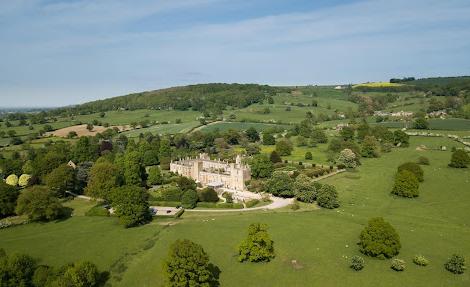
2 minute read
THE RICH ROYAL HISTORY OF THE COTSWOLDS
The present-day royal family resides in and has many connections with the Cotswolds and surrounding areas. There is Highgrove, King Charles’ country home, set amongst rolling fields and its famous spectacular gardens. Then Gatcombe Park, near Cirencester, the country residence of Princess Anne and the location of many equestrian events every year. Additionally, Princess Anne’s daughter Zara Tindall and her husband Mike Tindall, along with their young family, also have a home on the grounds of Gatcombe Park. Much of Zara Tindall’s equestrian career was shaped by the local area and its rich horse racing and eventing industry.
But as we approach the coronation of King Charles III on Saturday 6th May this year, it’s fascinating to look back further on the rich historical tapestry of the royals in the Cotswolds and surrounding areas.
Discover a few of my favourite local royal historical stories on the next page.
Henry VIII and Anne Boleyn
In 1535 on July 8th or 9th King Henry VIII and Queen Anne Boleyn set off from Windsor Castle on a Royal Progress; a progress was a royal tour. It was planned to continue for three months and at the time Henry and Anne had been married for just two years.
A Royal Progress was important for several reasons. It was a much-needed opportunity for the many royal residences to be cleaned and repaired, but also crucially, a chance for the King to be seen by his wider subjects. It also enabled
Henry to escape the plague and other diseases rife in London at the time and lastly it was a chance for the King and his court to relax and enjoy themselves. This particular progress was to encompass a significant part of the Cotswold and surrounding areas. However significantly, Henry also used the opportunity to begin breaking the hold that the Catholic church had on himself and England. This was called ‘The dissolution of the Monasteries’.
In 1535, Sudeley Castle in Winchcombe was a royal residence and from July 21st to 26th, a stop on the Royal Progress when Henry and Anne stayed at the castle for a week. It was their first stop in the Cotswolds. During this week and peaceful fields but the Cotswolds were of significant strategic importance during the civil wars. Charles I’s (the Royalist Cavaliers) main stronghold was his headquarters at Oxford and the Parliamentarians (the Parliamentarian Roundheads), under Oliver Cromwell, had garrisons in Malmesbury, Bristol, Gloucester and Cirencester. They were important sympathiser locations for them.
Henry met with Thomas Cromwell at nearby Winchcombe Abbey to discuss the dissolution of the monasteries. This process would take the Catholic church’s land and money creating income for the royal purse but also making Henry VIII ‘The Supreme Head of the Church of England’. The dissolution of the monasteries took place from 1536 until 1541 and would fundamentally change England and the lives of the people who lived there forever. Anne Boleyn would be beheaded less than a year later on May 8th 1536 after Henry met Jane Seymour on the very same Royal Progress.

The last battle of the civil war famously fought in Stow-on-the Wold and it’s said the streets ran with blood as the dead lay everywhere. Oliver Cromwell and the Roundheads were victorious, and Charles I was beheaded.










